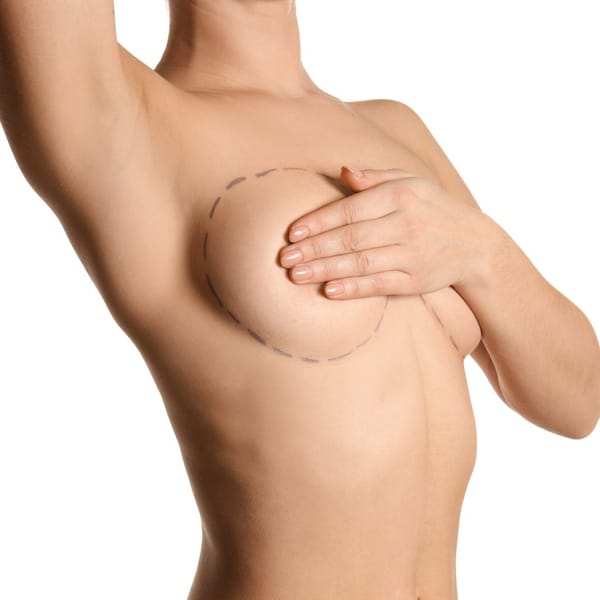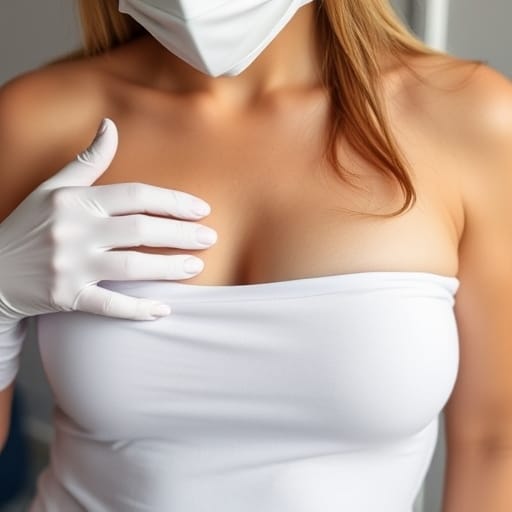Uniboob

Understanding Uniboob (Symmastia): Causes, Symptoms, and Treatment
Uniboob, medically known as symmastia, is a rare but significant condition in which the breasts appear to merge or lack a distinct separation between them. This condition can be congenital (present from birth) or acquired, particularly after breast surgery. Symmastia creates both cosmetic and, at times, physical discomfort, significantly impacting one's self-esteem and body image. For many women, the term "uniboob" might evoke frustration, especially for those who have undergone breast augmentation surgery hoping to enhance their appearance only to face this unwelcome complication.
In this comprehensive guide, we’ll explore the causes, symptoms, types, risks, and treatments of uniboob, as well as the corrective surgeries and preventive measures that can help avoid or resolve this condition.
What is Symmastia (Uniboob)?
Symmastia occurs when the skin and tissues between the breasts do not adequately adhere to the chest wall, resulting in the breasts merging towards the middle. This creates the appearance of a “uni-boob,” as the cleavage becomes less defined or, in severe cases, nonexistent. In some instances, the breast implants (if present) may shift towards the middle, exacerbating the issue.
Uniboob can occur in women who have never undergone surgery (congenital symmastia) or as a result of complications from breast augmentation (acquired symmastia).
Causes of Uniboob
Understanding the root causes of symmastia is essential in addressing and treating the condition. There are primarily two types of uni-boob: congenital and acquired.
- Congenital Symmastia
Congenital symmastia is a condition that is present from birth. In such cases, the skin and tissue between the breasts are naturally connected, causing the breasts to merge in the center. This form of symmastia is relatively rare, and women with this condition may experience a lack of defined cleavage and unusual positioning of their breasts.
Congenital symmastia often develops during puberty when the breasts grow and develop. Women with this form may be genetically predisposed to it, and while it doesn’t pose a medical risk, it can significantly affect one’s body image.
- Acquired Symmastia
Acquired symmastia is much more common and occurs as a complication after breast augmentation surgery. This form develops when breast implants are improperly positioned or when too large of an implant is used, leading to stretching and separation of the tissue between the breasts.
Acquired symmastia is usually caused by:
- Overly large implants: If breast implants are too large relative to the patient's chest size or anatomy, they can stretch the tissues in the cleavage area. This can cause the implants to move toward the center, creating a “uni-boob” effect.
- Improper surgical technique: Poor surgical planning or technique can contribute to the development of symmastia. If the breast pocket (the space created during surgery for the implant) is made too close to the middle of the chest, the implant can migrate inward, leading to symmastia.
- Weakening of the chest tissue: Excessive pressure or insufficient tissue support between the breasts can cause the tissue to stretch or separate, leading to symmastia.
- Capsular contracture is when the scar tissue around the implant becomes unusually thick or tight. This can cause implants to shift toward the center, contributing to symmastia.
Symptoms of Uniboob
The primary symptom of symmastia is the merging of the breasts, where the cleavage disappears or becomes less defined. Other signs include:
- Implants that shift toward the center: After surgery, if the implants begin to shift or move toward the middle of the chest, it may be a sign of developing symmastia.
- Tight or stretched skin between the breasts: In cases where the skin or tissue between the breasts is tight or feels stretched, it can indicate an issue with how the implants are settling.
- Discomfort: In more severe cases, women may experience physical discomfort due to the unnatural positioning of their breasts or implants.
- Aesthetic concerns: Symmastia can significantly impact the visual appearance of the breasts, making it difficult for women to wear specific clothing or feel comfortable with their appearance.
Risks and Complications
While uni-boob is primarily a cosmetic issue, it can lead to further complications, particularly in cases where implants are involved. Some potential risks include:
- Discomfort: Though rare, symmastia can lead to physical discomfort due to the unnatural positioning of the breasts and stretching of the skin and tissues.
- Damage to the chest wall: Improperly positioned implants or excessive pressure on the tissues between the breasts can cause damage to the chest wall or tissue.
- Increased risk of revision surgery: Women with symmastia may require additional surgery to correct the issue, which can increase the risk of infection, scarring, or further complications.
Treatment Options for Uniboob
Treatment for symmastia depends on the severity of the condition and whether it is congenital or acquired. For congenital symmastia, treatment is usually elective and aimed at improving appearance. For acquired symmastia, surgery is often required to correct the positioning of implants and restore natural cleavage. The following are the most common treatment options:
- Corrective Surgery
- Capsulorrhaphy (Internal Suturing): Capsulorrhaphy is a surgical technique that involves tightening the capsule (scar tissue) around the implant to prevent further shifting. Internal sutures are used to reinforce the area between the breasts and prevent the implants from moving towards the center.
- Implant Replacement: In cases where symmastia is caused by overly large implants, a surgeon may recommend replacing the implants with smaller ones to reduce the pressure on the tissues between the breasts. This can help restore a more natural appearance.
- Pocket Adjustment: If the breast pocket was created too close to the middle of the chest, the surgeon may adjust the pocket and reposition the implant to prevent further shifting.
- Tissue Reinforcement: In cases of severe tissue stretching, surgeons may use a cell dermal matrix (ADM), a tissue graft that provides additional support to the chest area. This can help reinforce the area between the breasts and prevent future implant movement.
- Non-Surgical Options
- Compression Garments: In mild cases of symmastia, compression garments or bras may help avoid further implant migration and provide additional support to the breasts.
- Physical Therapy: In cases of discomfort or pain caused by symmastia, physical therapy may be recommended to improve chest wall strength and reduce discomfort.
Corrective Surgery: What to Expect
Corrective surgery for uniboob can be complex, depending on the severity of the condition and the underlying cause. It is essential to consult with an experienced plastic surgeon who specializes in breast revision surgery. During your consultation, your surgeon will evaluate your condition, discuss your options, and develop a personalized treatment plan.
Preoperative Considerations
Before undergoing corrective surgery for symmastia, your surgeon will:
- Conduct a thorough physical examination to assess the severity of the condition.
- Discuss your surgical history, including any previous breast surgeries.
- Evaluate the size and positioning of your current implants (if applicable) and determine whether replacement is necessary.
The Surgical Procedure
The corrective surgery may take 1-3 hours, depending on the case's complexity. The surgeon will make incisions, typically along the inframammary fold (the crease under the breasts), and carefully adjust the breast pocket, reposition the implants, or add additional support (such as ADM) as needed. The internal sutures will be placed to ensure that the breasts remain separate and the chest wall is reinforced.
Recovery
After surgery, patients may experience swelling, bruising, and discomfort, which typically subside within a few weeks. Following your surgeon’s post-operative care instructions is essential to promote healing and avoid complications. This may include wearing a supportive bra or compression garment, limiting physical activity, and attending follow-up appointments to monitor progress.
Preventing Uniboob After Breast Surgery
Preventing symmastia after breast augmentation or revision surgery involves careful planning and surgical technique. Here are some steps that surgeons and patients can take to reduce the risk:
- Choosing the Right Implant Size: Opting for implants proportionate to your body and chest size can help reduce the risk of implant migration and tissue stretching.
- Proper Pocket Placement: Surgeons should create breast pockets that are correctly positioned to prevent the implants from shifting toward the center.
- Use of Reinforcement Materials: In cases where tissue strength is a concern, using ADM or other tissue reinforcement materials can provide additional support and prevent future complications.
Conclusion
Uniboob (symmastia) is a rare condition that can occur either naturally or as a result of breast augmentation surgery. While primarily a cosmetic concern, symmastia can significantly impact a woman’s self-confidence and body image. Fortunately, various treatment options, including corrective surgery, can help restore a natural cleavage and improve the appearance of the breasts. If you suspect that you have symmastia, it’s essential to consult with a qualified plastic surgeon to discuss your options and develop a personalized treatment plan.



